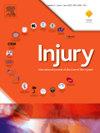Demographic patterns in horseback riding head and neck injuries within the United States: A NEISS database study
IF 2.2
3区 医学
Q3 CRITICAL CARE MEDICINE
Injury-International Journal of the Care of the Injured
Pub Date : 2025-01-24
DOI:10.1016/j.injury.2025.112167
引用次数: 0
Abstract
Objective
Our primary objective was to identify and describe demographic trends in head and neck injuries incurred while participating in horseback riding.
Study Design
Cross-sectional analysis.
Setting
National Database.
Methods
Head and neck injuries related to horseback riding over a ten-year period (2014–2023) were analyzed using data from the National Electronic Injury Surveillance System (NEISS). A total of 3,177 cases were identified. Inclusion criteria encompassed injuries to the head, neck, face, mouth, or ear. Variables included age, gender, injury type, anatomical location, and patient disposition. Chi-squared analyses were employed to compare the aforementioned injury variables.
Results
Among the 3,177 reported injuries of males and females, females (mean age 27.51 years, SD = 19.04) were more likely to be treated and released (83.29 %, n= 2023), while males (mean age 34.65 years, SD = 22.58) were more likely to be hospitalized. There was a significant association between gender and concussion diagnosis (p<.001), with females more likely to be diagnosed with concussions (n = 687) compared to males (n = 129). Females experienced more head and face injuries compared to males. Age distribution varied significantly across disposition categories, indicating different management practices for various age groups. The dataset indicates that the average age of females (27.51 years) is notably lower than that of males (34.65 years), suggesting a younger demographic among females overall.
Conclusions
The study highlights a significant gender disparity in horseback riding-related head and neck injuries, with females more likely to be treated and released and males more often requiring hospitalization.
求助全文
约1分钟内获得全文
求助全文
来源期刊
CiteScore
4.00
自引率
8.00%
发文量
699
审稿时长
96 days
期刊介绍:
Injury was founded in 1969 and is an international journal dealing with all aspects of trauma care and accident surgery. Our primary aim is to facilitate the exchange of ideas, techniques and information among all members of the trauma team.

 求助内容:
求助内容: 应助结果提醒方式:
应助结果提醒方式:


